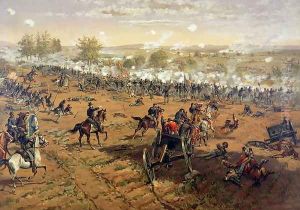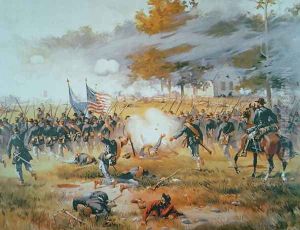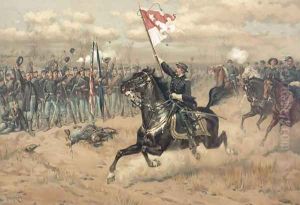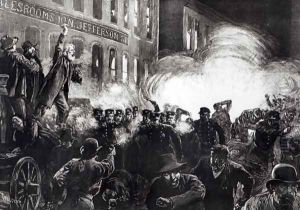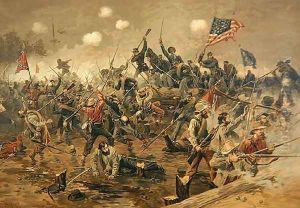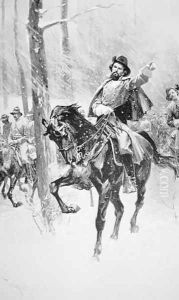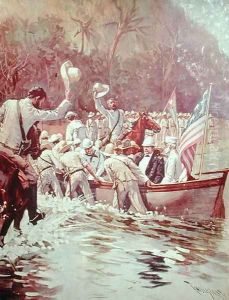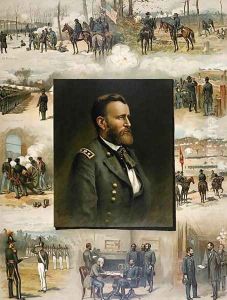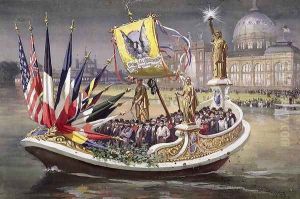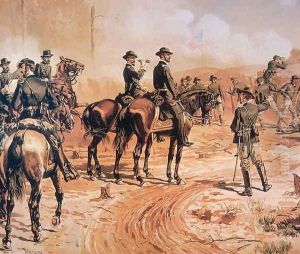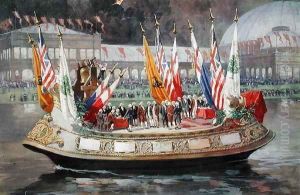Thure de Thulstrup Paintings
Thure de Thulstrup, born Bror Thure Thulstrup in Sweden in 1848, was a prominent artist and illustrator known for his military and historical scenes. His career spanned a significant part of the late 19th and early 20th centuries, a period that saw many changes in the art world, from the methods of reproducing artwork to the subjects that captured the public's imagination.
Thulstrup initially embarked on a military career in his native Sweden before migrating to the United States in 1872. This shift from soldier to artist was not immediate; he first worked in engineering and drafting roles, which honed his skills in detailed drawing. His military background profoundly influenced his later work, providing him with a unique perspective on the depiction of military subjects, including the attire, formation, and atmosphere of battlefield scenes.
By the late 1870s, Thulstrup had established himself as a talented illustrator, working for various publications such as Harper's Weekly, Scribner's Magazine, and Leslie's Weekly. His illustrations covered a wide range of subjects, but he was especially renowned for his work on historical and military themes. Thulstrup had a knack for bringing historical events to life, providing a visual accompaniment to the era's burgeoning interest in history and education. His work on the American Civil War, for instance, was highly regarded for its accuracy and detail, helping to shape the public's perception of the conflict.
Thulstrup's illustrations were not limited to publications; he also worked on numerous books, providing images that complemented the narratives of historical events, stories, and children's literature. His ability to create vivid, dynamic scenes made his work sought after for both educational and entertainment purposes.
Despite the prevalence of photography in the late 19th century, Thulstrup's illustrations remained in high demand. His work captured the essence of an event or scene with a vibrancy and narrative depth that photographs of the time could not. He was a master at using his illustrations to tell a story, employing a meticulous attention to detail and a dramatic use of light and shadow.
Thure de Thulstrup's contributions to the field of illustration and art were significant. He helped to define the visual culture of his time, influencing how historical and military events were depicted and remembered. His passing in 1930 marked the end of an era, but his work continues to be celebrated for its historic value and artistic merit.
